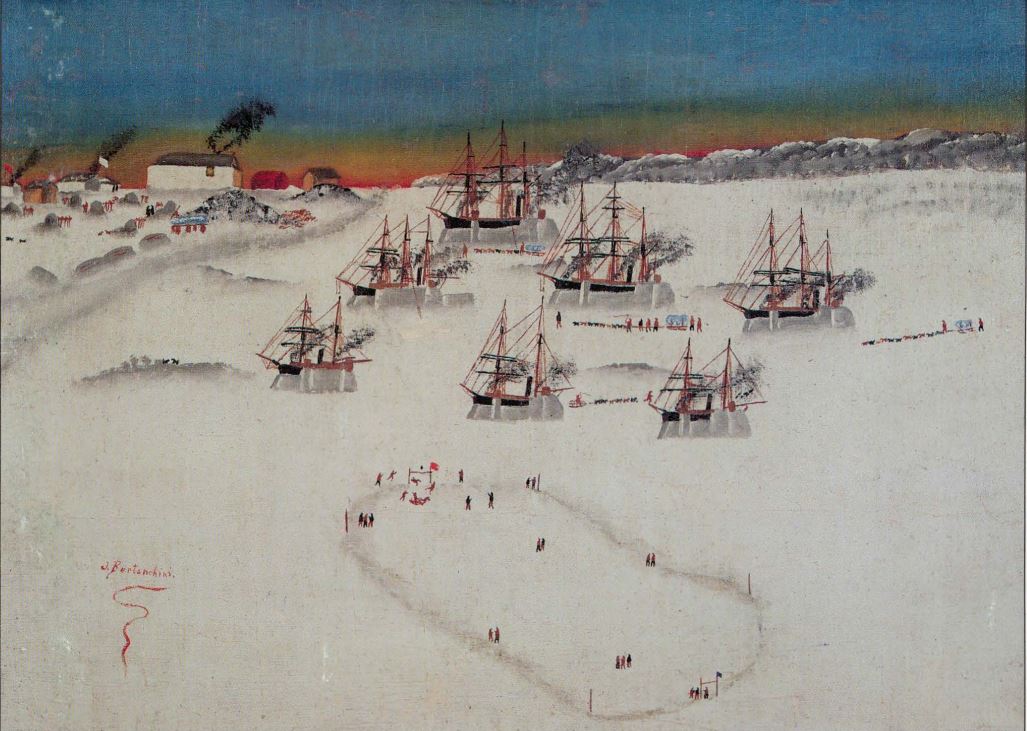“Where ladies are so scarce we have to muster in full”: Sophie Porter’s Account of Over–Wintering at Herschel Island, 1894-1895
DOI:
https://doi.org/10.25071/2561-5467.1044Keywords:
Herschel Island, Arctic whaling, whaling community, gender roles, class, personal accountAbstract
Sophie E. Porter’s account offers colourful insights into the life of the whaling community over–wintering at Herschel Island (Qikiqtaruk) in the mid–1890s. Porter lived on board the whaling ship Jesse H. Freeman in the winterized quarters prepared for her husband, but her full social schedule meant that the ship did not keep her captive. The excerpts transcribed, reproduced, and introduced in this commentary span the period from 19 August 1894 (when Jessie H. Freeman dropped anchor off the sand spit at Herschel) to Victoria Day (24 May) 1895. Porter’s account offers rare insights into how women and other members of the diverse Herschel Island community negotiated gender, race, and class positions and coped with life in this remote Arctic outpost.
Le récit de Sophie E. Porter offre un aperçu imagé de la vie de la communauté baleinière qui a passé l’hiver à l’île Herschel (Qikiqtaruk) au milieu des années 1890. Porter vivait à bord du baleinier Jesse H. Freeman dans les locaux aménagés pour l’hiver préparés pour son mari, mais son calendrier d’activités sociales était chargé même si elle était à bord d’un navire. Les extraits transcrits, reproduits et présentés dans cet exposé couvrent la période du 19 août 1894 (lorsque le Jessie H. Freeman a jeté l’ancre près de la flèche de sable à l’île Herschel) à la fête de la Reine du 24 mai 1895. Le récit de Porter offre un regard unique sur la façon dont les femmes et les autres membres de la communauté hétérogène de l’île Herschel déterminaient leurs positions de genre, de race et de classe et faisaient face aux difficultés de la vie dans cet avant–poste isolé de l’Arctique.
References
Bockstoce, John R. Steam Whaling in the Western Arctic. New Bedford: Old Dartmouth Historical Society, 1977.
Brewster, Mary (ed. Joan Druette). She Was a Sister Sailor: The Whaling Journals of Mary Brewster, 1845–1851. Mystic: Mystic Seaport Museum, 1992.
Bonham, Julia. “Feminist and Victorian: The Paradox of the American Seafaring Woman of the Nineteenth Century.” American Neptune 37, no. 3 (1977): 203–218.
Campbell, Daniel. “Hardball on Herschel Island.” Up Here (March 2016).
Coates, Ken and William Morrison. Land of the Midnight Sun: A History of the Yukon, 2nd ed. Montreal & Kingston: McGill–Queen’s University Press, 2002. 132–35.
Cook, John A. and Samson Pederson. Thar She Blows: Chasing Whales in the Arctic. Boston: Chapman & Grimes, 1937.
Cook, John A. Pursuing the Whale: A Quarter–Century of Whaling in the Arctic. Boston: Houghton Mifflin, 1926.
Druett, Joan. She Captains: Heroines and Hellions of the Sea. New York: Simon & Schuster, 2000. DOI: https://doi.org/10.1177/084387140001200211
Druett, Joan. Petticoat Whalers: Whaling Wives at Sea 1820–1920. New York: Collins, 1991.
Friesen, T. Max. “Event or Conjuncture? Search for the Material Record of Inuvialuit–Euro–American Whaler Interaction on Herschel Island, Northern Yukon.” Alaska Journal of Anthropology 7, no. 2 (2009): 45-61.
Kelcey, Barbara. “Jingo Belles, Jingo Belles, Dashing Through the Snow: White Women and Empire on Canada's Arctic Frontier.” PhD diss., University of Manitoba, 1994.
Krejci, Paul. “Skin Drums, Squeeze Boxes, Fiddles and Phonographs: Musical Interaction in the Western Arctic, Late 18th through Early 20th Centuries.” PhD diss., University of Alaska Fairbanks, 2010.
Morrison, David. “The Copper Inuit Soapstone Trade.” Arctic 44 (1991): 239–246. DOI: https://doi.org/10.14430/arctic1544
Nagy, Murielle. “Yukon North Slope Inuvialuit Oral History.” Occasional Papers in Yukon History No.1. Whitehorse: Government of the Yukon, Heritage Branch, 1994.
Norling, Lisa. Captain Ahab Had a Wife: New England Women and the Whalefishery, 1720–1870. Chapel Hill: University of North Carolina Press, 2000.
Nuligak. I, Nuligak. Trans./ed. Maurice Metayer. New York: Peter Martin, 1966.
Ried, Melanie. “The Captain’s Best Mate: Gender, Genre, and Representation in Women’s Whaling Journals, Letters, and Memoirs, 1823 to 1915.” PhD diss., University of Hawai’i at Mānoa, 2013.
Springer, Haskell. “The Captain’s Wife at Sea.” In Iron Men, Wooden Women: Gender and Seafaring in the Atlantic World, 1700–1920, ed. Margaret Creighton and Lisa Norling. Baltimore: Johns Hopkins University Press, 1996. 92–116.
Stone, Thomas. “Whalers and Missionaries at Herschel Island.” Ethnohistory 28, no. 2 (1981): 103. DOI: https://doi.org/10.2307/481113
Virtual Museum of Canada. “The Bishop Who Ate His Boots.” Whitehorse: Old Log Church Museum, 2002.
Whiting, Emma Mayhew and Henry Beetle Hough. Whaling Wives. Boston: Houghton Mifflin, 1953.

